
|
| Accept Cookies | Customize | Refuse Cookies |
Nikkormax www.juzaphoto.com/p/Nikkormax  |
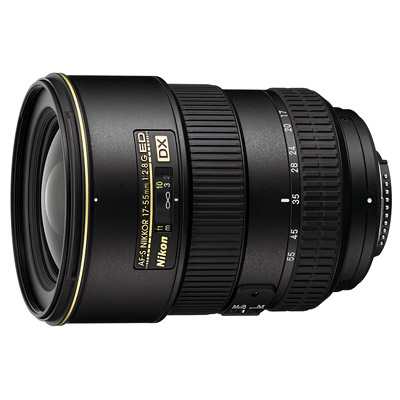 | Nikon AF-S DX 17-55mm f/2.8 G ED Pros: A real Nikon pro at the old. Af. Interesting used if really in good condition not above the 550 euros. Cons: Dated, lack of stabilizer, price of the new today. Opinion: I've had this gorgeous optics for a few years on D200 and D300. I think it's fair to pay tribute. Nothing to say. Colors, saturation, contrasts, depth, backlight, typically in the best Nikon tradition. Crystal clear. Fast and high performance AF. The valid Sigma 17-50 2.8 which I also tested for good, simply disappears at the comparison but costs around 250 euros new. Built like a tank, in DX and in zone of war, crawling in the mud at night under the tracers wielding a D500, I would still like him also to use it as improper weapon to the must and I think-but I am not sure-that should be able to solve the sensor. However it suffers from time. Not so much because it is big, imposing and heavy but because it does not have the stabilizer, the distortion is there all even if today it goes to place with a click in zero time. In the years of the Admirals in DX its price seemed more than justified, stabilizer aside, for someone could still be today. Great lens also from portrait, with a blurry to TA that has nothing to envy to its full frame counterparts. Today – Personal opinion – I preferred him the new 16-80 2.8/4. Maybe even a better thread sharpness at the edges, focal length "all do" certainly more comfortable, finally the nanocrystals and the last generation stabilizer have revived my old D300 that I will keep until I can use it only as a door stop. Sure it's plastic, stracosta, it's not weather sealed like the 17-55 but it's much more compact and lighter. With the D500 around, if they made an updated version of the 17-55 maybe 16-58 always 2.8 and built with tank tropicalized, with the latest generation VR around 1500 euros, could make sense. The full format now for me is without mirror, but who had DX-level bodies with a discreet kit of optics, maybe a thought could also make us. sent on November 02, 2018 |
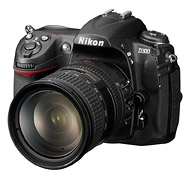 | Nikon D300 Pros: All. Cons: Noise over Iso 1600. Live View primordial but there is. Opinion: Bought in 2008 for a long and complicated still life (FOOD) work in the studio with which it has been widely rewarded. Then it ended up at the bottom of a closet, rarely used and rediscovered lately together with the desire to return to make two Fotine. Machine body of a monstrous Quality. sturdy, reliable, always ready, Super Ergonomic. A machine to use on the battlefield with the gush of Kalashnikov whistling over your head. With two batteries you make tons of shots and when you're broken up, you go on for two more weeks. At the time the digital still coexisted with the last foci of film (which now comes back in fashion). Accustomed to the F100, the D300 has that typical operating speed of the old pro film bodies with all the controls on the body, excellently positioned, easy to reach and Indestructible. Certainly today 12MPX can be pochini, so you have to compose the shots correctly immediately to avoid the crop. With Today's algorithms for noise reduction, in development/post work well I 1600 Iso with good detail, recovery of decent shadows, good color sealing, Besides I would not push. Good dynamic range more than dignified considering the sensor obsolete, which wants to make it usable even today for professional use with appropriate optics up to 800 Iso. Beautiful colors reminiscent of Kodak beautiful films contrastose with red LOADS. Still current the burst at 7 fps at 12 bits with a buffer even him more than decent considering the Age. At 14 Bit the burst drops to about 3 fps. The 14 bits are useful and well-workable in post for the lens images reasoned in the most complicated conditions. Very precise exposure meter. In the Matrix there is hardly ever any need to compensate unless you do it with knowledge of cause to get the desired image in the given shooting conditions. Great White Balance. Great Jpeg in the car but you can't correct the distortion of the newer or older Lenses. AF module still current and well combative in all uses: easier than I do that he. Today they give you all this stuff around 250 euros. Ideal for those who want to get out of the consumer machines that make beautiful photos immediately all by themselves and learn to manage the recovery with greater Awareness. When you learn to tame it, it can still give great Satisfaction. In any case it is outdated technology. He went out along with the D3 style D5/D500. I'm Keeping it, tié. sent on October 11, 2018 |
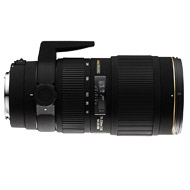 | Sigma 70-200mm f/2.8 EX DG HSM Macro II Pros: Price, used is found as new around 400 euros. Pro Lens for all intents and purposes even if entry level. Brightness, general chromatic rendering, blurred, sharpness up to 150mm even at TA. Build quality, nice hood, solidity. The Autofocus is a splinter even in low light. Cons: Lack of stabilizer But there is the newer model and now there is also the Art. Soft at 200 to TA but just close to 3.5 and becomes very usable. F/B Fucus which is a terno to the lot but resolves with fine adjustment. Weight. Opinion: I bought it again that had come out recently. Mainly used in DX. It cost 750 euros against the approximately 2000 euro of the Nikon Vr II that remains another planet. On my D300 manifested back focus I corrected it satisfactorily with the fine adjustment of the machine. I use it even today with as much satisfaction, but sometimes I feel the lack of the stabilizer with the D300 but I arrange with monopod. With newer sensors with good high-Iso hold, it can still tell its much more than decently. From 70mm to 150mm it is very sharp with a beautiful chromatic rendition. discreetly contained aberrations. Minimum distortion. Over 150mm you have to close a hair otherwise becomes soft, which for someone can be useful in portraits. At the intermediate focal lengths makes it more than decently right on portraits even at TA. At the intermediate diaphragms is a discrete blade. If the lack of stabilizer is not a problem, I would recommend it because it is used in excellent conditions at really low prices and is certainly better than any consumer plasticone not bright. sent on September 21, 2018 |
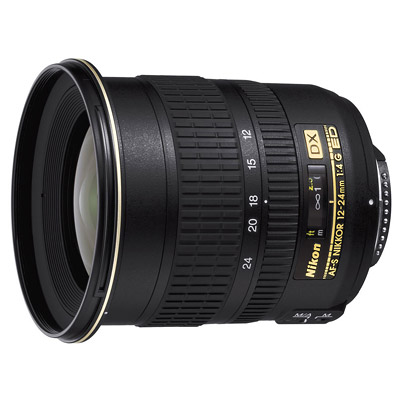 | Nikon AF-S DX 12-24mm f/4 G ED Pros: Chromatic rendering, contained distortion, glare resistance, AF, constant aperture, IF (does not stretch and the front lens does not rotate), compact and light. Cons: Price of the new today, drop in sharpness at the edges at 12mm f4 (under certain conditions can be a merit), was one of the first pro Plasticoni, lack VR. Opinion: "Perfect" wide-angle zoom for focal lengths on DX. I bought it for a D200 around 2006 I think and I still have it today. I have always liked the chromatic rendition, typical of the Nikon lenses of the time that was (de Gustibus). Good sharpness even at the edges from 5.6. At 12mm f4 instead loses much detail at the edges but already at 14mm improves and at 16mm it works. However at 12 CT standing below, close, the softness at the edges becomes a value giving a pleasant sensation of bokeh like FF, depth and detachment, I keep it for this. Usually on DX I like to work TA because the PDC of the reduced format with a little ' attention allows it to the advantage of the three-dimensionality of the images. If you want you can also make the portrait set with good results. To be a wide angle pushed the distortion is really minimal. It doesn't like the filters you can do without. But where it really excels, and among the wide angle zooms is perhaps undefeated even today, it is in the resistance to flare and reflexes. For those who love backlighting is a must have. It could probably be affected by the weight of the years. I would be curious to try it on a D500. Who uses it on DX sensors around 20MPX and knows how to handle wide angles, speaks well and says it solves them but I do not venture not having tried. It also offers great satisfactions in architecture and landscape at F8/11 on D300. I don't think it makes sense to buy it again today but they find it used at very affordable prices. sent on September 14, 2018 |
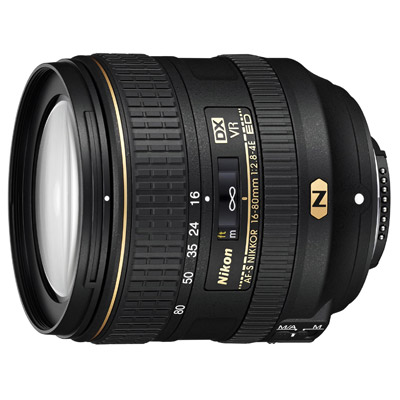 | Nikon AF-S DX 16-80mm f/2.8-4 E ED VR Pros: Sharpness, sharpness, sharpness. Bright. High-level general color rendition. Well-controlled aberrations. Awesome stabilizer. Af. Caruccio the Blur to TA from 50 to 80mm. It would probably solve a 40mpx sensor if it existed on Aps-C. Compact, lightweight and well built but is not the 24-70 2.8 VR. Amen. Cons: Price exaggerated beyond the absurd but if it was weather sealed, would be worth the current full price with official guarantee. Opinion: I had no intention of taking it after reading around, even here on Juza, discordant and overall negative opinions. It's going to be a bottle foundation, I thought. Much better than the Sigmino 17-50 2.8 that I was going to take at a quarter of the price (and that I tried to pretty well borrow). With Sigma I have always had quite positive experiences. Instead, I happen to be in my hand by chance on 16-80. I look inside waiting for an embarrassing distortion from Plasticone prosumer. But no: Considering the excursion from all to do "perfect", the distortion is in the norm and more than acceptable. Who like me started with film and experienced the transition to digital, will remember the suffering in the management of the zoom also Super Pro. More than barrels were carboys of Barbera and cushions on the teeth. Since on Dia there was no way to correct the distortions in post, he learned to compensate them and exploit them in recovery. Not to mention the cartoons, together with the goals they gave you the almanacs of Alan Ford. However, a click on NX-D, problem solved. Maybe, indeed without perhaps, the best Nikon Dx handyman ever. Better even than the 17-55 2.8 I've had for years in his time. Optics of great quality, built like a tank, but the 16-80 seems to me more defined at the edges, in the center are substantially equivalent and to TA the 16-80 is not bad at all. All the new treatments of the lenses are made to feel. The stabilizer has revived my old D300 and allowed me to shoot in critical conditions up to 1/8 seconds at 200 Iso. Unthinkable when I had the 17-55, whose distortion is not at all so inferior to the 16-80, we are there instead. I wanted to cry with joy. Imagine what happens if you mount it on a D500: Hello Hello tripod. It's a blade, no way. I paid him dearly. But I remain in Dx until I move to ML to which I will leave the full format of which I got rid years ago. Who knows, I could put in a D500 in the meantime because, in my useless and absolutely unreliable opinion, with this 16-80 there I could do some portraino in decency-maybe a fifty super bright apart there is-the feeling of depth for Being Aps-C is remarkable. Format with which we make the cinema moreover (Super 35), certainly with superlative optics, but it is not lacking the sensation of depth and three-dimensionality to the cinema eh, despite the sensorini from a small handful of MPX. [Posthumously Edit]: Although FF and Aps-C are not comparable (different technologies/different uses), coupled D500/16-80, in terms of practical field use, in my opinion could be a viable alternative to D5/24-70VR at less than a third of the price, both for The amateur evolved that for the professional "smart". Now the big difference between the two is that the second makes the bills. Who is really capable-it is not my case-with D500/16-80, experience and handle, could bring out large images not only in sport and wild life, containing much of the costs of management. sent on September 03, 2018 |
 JuzaPhoto contains affiliate links from Amazon and Ebay and JuzaPhoto earn a commission in case of purchase through affiliate links.
JuzaPhoto contains affiliate links from Amazon and Ebay and JuzaPhoto earn a commission in case of purchase through affiliate links.May Beauty Be Everywhere Around Me